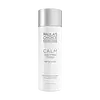What's inside
What's inside
 Key Ingredients
Key Ingredients

No key ingredients
 Benefits
Benefits

 Concerns
Concerns

 Ingredients Side-by-side
Ingredients Side-by-side

Water
Skin ConditioningGlycerin
HumectantCyclopentasiloxane
EmollientGlycereth-26
HumectantAllantoin
Skin ConditioningGenistein
Skin ConditioningCarnosine
Skin ConditioningDipotassium Glycyrrhizate
HumectantEpigallocatechin Gallate
AntioxidantGlycyrrhiza Glabra Root Extract
BleachingBoerhavia Diffusa Root Extract
Skin ProtectingCaprylic/Capric Triglyceride
MaskingDimethiconol
EmollientSodium Hyaluronate
HumectantOleic Acid
EmollientLinolenic Acid
CleansingPalmitic Acid
EmollientLinoleic Acid
CleansingPhospholipids
Skin ConditioningEpilobium Angustifolium Flower/Leaf/Stem Extract
Skin ConditioningPolysorbate 20
EmulsifyingHydrogenated Lecithin
EmulsifyingAcrylates/C10-30 Alkyl Acrylate Crosspolymer
Emulsion StabilisingXanthan Gum
EmulsifyingLaureth-4
EmulsifyingLaureth-23
CleansingSodium Hydroxide
BufferingButylene Glycol
HumectantDisodium EDTA
Ethylhexylglycerin
Skin ConditioningPhenoxyethanol
PreservativeWater, Glycerin, Cyclopentasiloxane, Glycereth-26, Allantoin, Genistein, Carnosine, Dipotassium Glycyrrhizate, Epigallocatechin Gallate, Glycyrrhiza Glabra Root Extract, Boerhavia Diffusa Root Extract, Caprylic/Capric Triglyceride, Dimethiconol, Sodium Hyaluronate, Oleic Acid, Linolenic Acid, Palmitic Acid, Linoleic Acid, Phospholipids, Epilobium Angustifolium Flower/Leaf/Stem Extract, Polysorbate 20, Hydrogenated Lecithin, Acrylates/C10-30 Alkyl Acrylate Crosspolymer, Xanthan Gum, Laureth-4, Laureth-23, Sodium Hydroxide, Butylene Glycol, Disodium EDTA, Ethylhexylglycerin, Phenoxyethanol
Water
Skin ConditioningAloe Barbadensis Leaf Juice
Skin ConditioningGlycerin
HumectantHamamelis Virginiana Water
AstringentPolysorbate 20
EmulsifyingRosa Damascena Flower Water
MaskingRosa Hybrid Flower Extract
Skin ConditioningHamamelis Virginiana Leaf Extract
Skin ConditioningRosa Damascena Flower Oil
MaskingPentylene Glycol
Skin ConditioningChlorphenesin
AntimicrobialCaprylyl Glycol
EmollientParfum
MaskingPotassium Sorbate
PreservativeSodium Benzoate
MaskingSodium Chloride
MaskingCitric Acid
BufferingPhenoxyethanol
PreservativePropylene Glycol
HumectantBenzoic Acid
MaskingGeraniol
PerfumingCitronellol
PerfumingCI 19140
Cosmetic ColorantCI 17200
Cosmetic ColorantWater, Aloe Barbadensis Leaf Juice, Glycerin, Hamamelis Virginiana Water, Polysorbate 20, Rosa Damascena Flower Water, Rosa Hybrid Flower Extract, Hamamelis Virginiana Leaf Extract, Rosa Damascena Flower Oil, Pentylene Glycol, Chlorphenesin, Caprylyl Glycol, Parfum, Potassium Sorbate, Sodium Benzoate, Sodium Chloride, Citric Acid, Phenoxyethanol, Propylene Glycol, Benzoic Acid, Geraniol, Citronellol, CI 19140, CI 17200
 Reviews
Reviews

Ingredients Explained
These ingredients are found in both products.
Ingredients higher up in an ingredient list are typically present in a larger amount.
Glycerin is already naturally found in your skin. It helps moisturize and protect your skin.
A study from 2016 found glycerin to be more effective as a humectant than AHAs and hyaluronic acid.
As a humectant, it helps the skin stay hydrated by pulling moisture to your skin. The low molecular weight of glycerin allows it to pull moisture into the deeper layers of your skin.
Hydrated skin improves your skin barrier; Your skin barrier helps protect against irritants and bacteria.
Glycerin has also been found to have antimicrobial and antiviral properties. Due to these properties, glycerin is often used in wound and burn treatments.
In cosmetics, glycerin is usually derived from plants such as soybean or palm. However, it can also be sourced from animals, such as tallow or animal fat.
This ingredient is organic, colorless, odorless, and non-toxic.
Glycerin is the name for this ingredient in American English. British English uses Glycerol/Glycerine.
Learn more about GlycerinPhenoxyethanol is a preservative that has germicide, antimicrobial, and aromatic properties. Studies show that phenoxyethanol can prevent microbial growth. By itself, it has a scent that is similar to that of a rose.
It's often used in formulations along with Caprylyl Glycol to preserve the shelf life of products.
Polysorbate 20 is made by combining ethoxylation of sorbitan, ethylene oxide, and lauric acid. It is a mild cleansing agent, surfactant, and emulsifier.
As a surfactant, it helps collect dirt and oils for washing. Emulsifiers prevent oils and water from separating.
Polysorbate 20 also adds scent to a product. Since it is made using sorbitol, it has a sweet scent. Sorbitol can also be found in fruits such as apples and peaches.
The lauric acid used to create Polysorbate 20 is often derived from coconuts.
Polysorbate 20 may not be fungal acne safe.
Learn more about Polysorbate 20Water. It's the most common cosmetic ingredient of all. You'll usually see it at the top of ingredient lists, meaning that it makes up the largest part of the product.
So why is it so popular? Water most often acts as a solvent - this means that it helps dissolve other ingredients into the formulation.
You'll also recognize water as that liquid we all need to stay alive. If you see this, drink a glass of water. Stay hydrated!
Learn more about Water